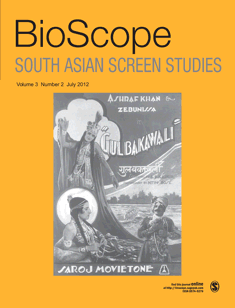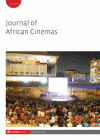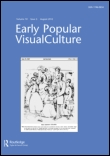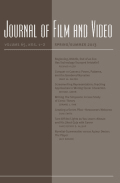
CINEFORUM
Scope & Guideline
Fostering Critical Discourse in Cinematic Creativity
Introduction
Aims and Scopes
- Film Analysis and Critique:
CINEFORUM provides critical examinations of both contemporary and classic films, analyzing their themes, narratives, and stylistic choices. - Cultural and Historical Context:
The journal places significant emphasis on the socio-cultural and historical contexts of films, exploring how these influences shape cinematic expressions. - Interviews and Insights from Filmmakers:
CINEFORUM features interviews with filmmakers, offering readers direct insights into the creative processes and thoughts of those behind the camera. - Exploration of Film Theory:
The journal publishes discussions on various film theories, examining how they apply to different cinematic works and movements. - Focus on International Cinema:
CINEFORUM highlights films from diverse cultures and countries, promoting a global understanding of cinema and its myriad expressions.
Trending and Emerging
- Exploration of Identity and Representation:
There is a growing emphasis on themes of identity—such as gender, race, and sexuality—reflecting contemporary discussions around representation in film. - Intersections of Technology and Cinema:
Recent publications have increasingly addressed the impact of technology on filmmaking and viewing experiences, including discussions on digital media, virtual reality, and AI in cinema. - Environmental and Political Themes:
CINEFORUM is seeing an uptick in articles that address environmental issues and political narratives within films, highlighting the role of cinema as a medium for social commentary. - Innovative Narrative Structures:
The journal has begun to focus on films that employ non-linear storytelling and experimental formats, reflecting a trend towards innovative narrative techniques in contemporary cinema. - Global Perspectives on Cinema:
Emerging themes include a stronger focus on non-Western cinema and the exploration of global cinematic movements, emphasizing the importance of diverse voices in film.
Declining or Waning
- Traditional Genre Studies:
There appears to be a waning interest in strictly genre-based studies, as the journal shifts towards more interdisciplinary and thematic explorations of cinema. - Historical Film Reviews:
While historical context remains important, there has been a noticeable decrease in articles dedicated solely to reviews of historical films, possibly due to the focus on contemporary cinema. - Mainstream Film Critique:
The journal has gradually moved away from focusing heavily on mainstream Hollywood films, favoring a broader range of international and independent cinema instead.
Similar Journals

Bioscope-South Asian Screen Studies
Fostering Interdisciplinary Insights into Visual NarrativesBioscope-South Asian Screen Studies is an influential journal dedicated to advancing the field of screen studies in the South Asian context, published by SAGE Publications India Pvt Ltd. With an ISSN of 0974-9276 and an E-ISSN of 0976-352X, this journal spans a convergence of scholarly research from 2010 to 2024, providing a significant platform for interdisciplinary dialogue. Holding a Q3 rating in Communication and a Q2 rating in Visual Arts and Performing Arts in the 2023 category quartiles, it ranks 212th in its field on Scopus, reflecting its vital contribution to academic discourse. Bioscope aims to explore and critically analyze the rich tapestry of South Asian cinema, media, and performance arts, offering researchers, professionals, and students a valuable resource for deepening their understanding of regional and global cinematic narratives. Readers will find insightful articles that probe the cultural, social, and political dimensions of screen studies, making this journal an essential reference for anyone engaged in the evolving landscape of South Asian visual culture.

Journal of African Cinemas
Exploring the Rich Tapestry of African Film NarrativesJournal of African Cinemas is a pioneering publication dedicated to exploring the dynamic field of African cinema and its cultural impacts. Published by INTELLECT LTD in the United Kingdom, this journal serves as a crucial platform for researchers, filmmakers, and students interested in understanding the complexities of film within the African context. With ISSN 1754-9221 and E-ISSN 1754-923X, the journal focuses on various aspects of cinema, including theory, production, and reception, highlighting the rich tapestry of storytelling from the African continent. Despite being classified in Q4 in Communication and Q3 in Cultural Studies and Visual Arts & Performing Arts for 2023, it stands out by capturing the multifaceted identities and experiences portrayed in African films. Engaging with a diverse array of interdisciplinary topics, the Journal of African Cinemas invites contributions that foster critical discourse and promote a deeper understanding of the unique aesthetic and social narratives present in African filmmaking. As it converges into a significant scholarly resource from 2017 to 2023, this journal is an essential read for anyone invested in the intersection of culture and cinema.

CINEASTE
Celebrating the Intersection of Visual and Performing ArtsCINEASTE is a distinguished journal dedicated to the critical exploration of cinema, providing a platform for scholars, filmmakers, and enthusiasts to engage with the complexities of film studies. Established and published by CINEASTE, this periodical serves as a vital resource for those interested in the intersection of visual arts and performing arts. Although it is not currently offered as Open Access, CINEASTE remains a respected publication within the academic community, having been indexed in Scopus until 2016. With an ISSN of 0009-7004, it has established itself despite its lower ranking in the arts and humanities category, reflecting the competitive nature of this field. Researchers, students, and professionals alike will find ample opportunities for insightful discussion and scholarly contributions to the evolving landscape of cinematic discourse. CINEASTE continues to uphold its mission of enhancing film scholarship, making it a crucial reference point for anyone eager to deepen their understanding of cinema's artistic and cultural significance.

POSITIF
Transforming Perspectives in the Dynamic Arts CommunityPOSITIF is a distinguished journal, published by POSITIF EDITIONS, focusing on the dynamic fields of Visual Arts and Performing Arts. With ISSN 0048-4911, this journal has been a significant contributor to the arts community since its establishment in 2002, and it continues to captivate readers with its upcoming issues projected until 2024. Based in the heart of France at 12 RUE PIERRE ET MARIE CURIE, 75005 PARIS, POSITIF serves as an invaluable platform for researchers, professionals, and students alike, promoting innovative discourse and critical analysis within the arts. Despite holding a Q4 category ranking in the 2023 classification and a Scopus rank of 637/667, its commitment to enhancing the understanding and appreciation of visual and performing arts remains steadfast. Researchers are invited to contribute to this growing body of knowledge, enriching the journal's scope and impact in a vibrant artistic landscape.

Film-Philosophy
Unveiling the Aesthetics of Cinema and PhilosophyFilm-Philosophy is an esteemed academic journal published by Edinburgh University Press, specializing in the intersection of film studies and philosophical discourse. Since its launch in 1998, this Open Access journal has provided a platform for scholarly debates and innovative research, allowing for free and unrestricted access to its content, which has significantly contributed to the global dialogue on visual culture. With a commendable impact illustrated by its Q1 ranking in Visual Arts and Performing Arts and Q2 in Philosophy, the journal sits within the top quartile of its field. Operating from the United Kingdom, Film-Philosophy is committed to fostering a multidisciplinary approach, inviting contributions from researchers, professionals, and students alike. By engaging with critical theories and the aesthetics of cinema, the journal stands as a vital resource for understanding the philosophical implications of film and its cultural significance.

SIGHT AND SOUND
Unveiling the Richness of Cinematic ExpressionSIGHT AND SOUND is a prestigious journal published by the British Film Institute, dedicated to the exploration of cinema and its cultural significance. With an ISSN of 0037-4806 and an E-ISSN matching the same, this journal has been a critical platform for film studies since its inception, contributing valuable insights to the realms of visual arts and performing arts. Despite its discontinuation in the Scopus database post-2021, SIGHT AND SOUND commands respect within its field, currently holding a Q3 rank among Visual Arts and Performing Arts journals. Operating from 21 Stephen Street, London W1P 1PL, England, it serves as a vital resource for researchers, professionals, and students looking to deepen their understanding of film theory, critique, and history. While access to its articles is not open, the journal continues to influence the discourse in film studies, making it a significant asset in academic and professional circles.

Canadian Journal of Film Studies-Revue Canadienne d Etudes Cinematographiques
Unveiling the Artistry of Film StudiesCanadian Journal of Film Studies-Revue Canadienne d'Études Cinématographiques is a distinguished publication dedicated to the exploration of film studies within the context of Canadian cinema and global visual arts. Published by University of Toronto Press Inc., this journal offers a platform for innovative and critical scholarship, having achieved a notable Q2 ranking in the Visual Arts and Performing Arts category for 2023, with an impressive Scopus rank of 207 out of 667, positioning it in the 68th percentile among peers. With a continuous publication record since its established years from 1998 to 2001 and 2004 to 2024, it has become an essential resource for researchers, professionals, and students interested in the evolving landscape of film and cinema. The journal not only addresses theoretical perspectives but also engages with contemporary practices, thereby fostering a deeper understanding of cinematic arts. Despite not offering open access, it remains a vital repository of knowledge for those seeking to advance their studies and contribute to the discourse in film studies.

Early Popular Visual Culture
Unveiling the Dynamics of Visual Culture in Everyday LifeEarly Popular Visual Culture, published by Routledge Journals, Taylor & Francis Ltd, is a pivotal academic journal dedicated to the interdisciplinary study of visual culture from historical and contemporary perspectives. Since its inception in 2009, this journal has carved out a niche within the academic landscape, achieving a notable Q2 ranking in Visual Arts and Performing Arts and Q3 in both Cultural Studies and History categories as of 2023. With an ISSN of 1746-0654 and E-ISSN of 1746-0662, it serves as a vital platform for scholars to disseminate cutting-edge research and critical analysis on visual phenomena that shape popular culture. The journal not only enhances scholarly discourse but also contributes significantly to the understanding of visual practices across different societies. Researchers, professionals, and students will find this journal invaluable for exploring the intricate interactions between visual culture and social contexts, thereby enriching their academic pursuits and insights.

JOURNAL OF FILM AND VIDEO
Unveiling New Perspectives in Film and VideoThe JOURNAL OF FILM AND VIDEO, published by University of Illinois Press, is a pivotal academic platform that delves into the intricate intersections of film, video, and media studies. With a notable ISSN of 0742-4671 and E-ISSN 1934-6018, this journal has established itself as a significant contributor to the visual arts and performing arts field, currently positioned in Q3 of its category as per the 2023 quartiles. Spanning from 2002 to 2024, it presents a comprehensive array of research, critiques, and theoretical discussions that advance scholarly discourse in film and video. The journal encourages contributions that explore innovative narratives and methodologies, catering to a diverse readership of researchers, professionals, and students alike. While it maintains a traditional subscription model and is not open access, its impact is amplified through its Scopus ranking, holding the 323rd position out of 667 in the visual arts and performing arts category. With its commitment to fostering critical conversations and promoting scholarly excellence, the JOURNAL OF FILM AND VIDEO remains an essential resource for those invested in the study and understanding of film and media.

CINEJ Cinema Journal
Exploring the Art and Impact of Cinema.CINEJ Cinema Journal, published by the University of Pittsburgh Library System, stands as a pivotal platform for scholarly discourse in the dynamic field of cinema studies. With an ISSN of 2159-2411 and an E-ISSN of 2158-8724, this Open Access journal has been dedicated to disseminating high-quality research since its inception in 2011. CINEJ provides an essential resource for researchers, practitioners, and students alike, exploring varied dimensions of cinema, including its cultural, historical, and technological implications. The journal is committed to fostering interdisciplinary dialogue, making it a vital asset for those seeking to deepen their understanding of cinema as an art form and social phenomenon. By engaging with contemporary issues and trends in the cinematic landscape, CINEJ encourages contributions that illuminate the intersection of film and social inquiry, ensuring its relevance in today’s academic ecosystem.